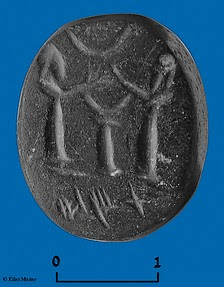 In an attempt to remind us that only God is eternal and worthy of our worship I will present an overview of biblical references that share a divine view of God's purpose and ultimate plan for the earth. At the same time, these references bare testimony against the delusional Pagan world view that honors the earth as divine and depreciates mankind as a product of Mother earth. (In an age of enlightenment and great scientific advancement, why are we so naive and foolish? Could our stupidity be the byproduct of our presupposition to the false doctrines of atheism, secularism, humanism and evolution?)
In an attempt to remind us that only God is eternal and worthy of our worship I will present an overview of biblical references that share a divine view of God's purpose and ultimate plan for the earth. At the same time, these references bare testimony against the delusional Pagan world view that honors the earth as divine and depreciates mankind as a product of Mother earth. (In an age of enlightenment and great scientific advancement, why are we so naive and foolish? Could our stupidity be the byproduct of our presupposition to the false doctrines of atheism, secularism, humanism and evolution?)Here are a few thoughts from the Word of God revealed in Scripture:
In the beginning God created the heavens and the earth (Genesis 1:1)
By the same word the heavens and earth that now exist are stored up for fire, being kept until the day of judgment and destruction of the ungodly. (2 Peter 3:7)
Now the earth was corrupt in God's sight, and the earth was filled with violence. (Genesis 1:11)
I will bring a flood of waters upon the earth to destroy all flesh . . . everything that is on the earth shall die (Genesis 6:17)
The earth is the Lord's (Exodus 9:29)
The earth is the Lord's and the fullness thereof, the world and those who dwell therein, for he has founded it upon the seas and established it upon the rivers (Psalm 24:1)
The Lord by wisdom founded the earth; by understanding he established the heavens (Proverbs 3:19)
The Lord is in his holy temple; let all the earth keep silence before him (Habakkuk 2:20)
The Lord God of hosts, he who touches the earth and it melts, and all who dwell in it mourn (Amos 9:5)
"I will utterly sweep away everything from the face of the earth," declares the Lord. "I will sweep away man and beast . . . I will cut off mankind from the face of the earth." (Zephaniah 1:2, 3)
In the fire of his jealousy, all the earth shall be consumed; for a full and sudden end he will make of all the inhabitants of the earth (Zephaniah 1:18)
For thus says the Lord of hosts: "Yet once more, in a little while, I will shake the heavens and the earth and the sea and the dry land" (Haggai 2:6)
At that time his voice shook the earth, but now he has promised, "Yet once more I will shake not only the earth but also the heavens." This phrase, "yet once more," indicates the removal of things that are shaken - that is, things that have been made - in order that the things that cannot be shaken may remain." (Hebrews 12:26)
The day of the Lord will come like a thief, and then the heavens will pass away with a roar, and the heavenly bodies will be burned up and dissolved, and the earth and the works that are done on it will be exposed. (2 Peter 3:10)
According to his promise we are waiting for new heavens and a new earth in which righteousness dwells (2 Peter 3:13)
Then I was a new heaven and a new earth, for the first heaven and the first earth had passed away, and the sea was no more. (Revelation 21:1)
Galyn Wiemers
www.generationword.com








